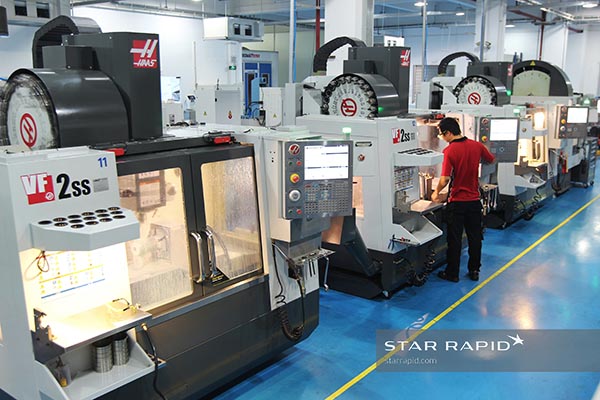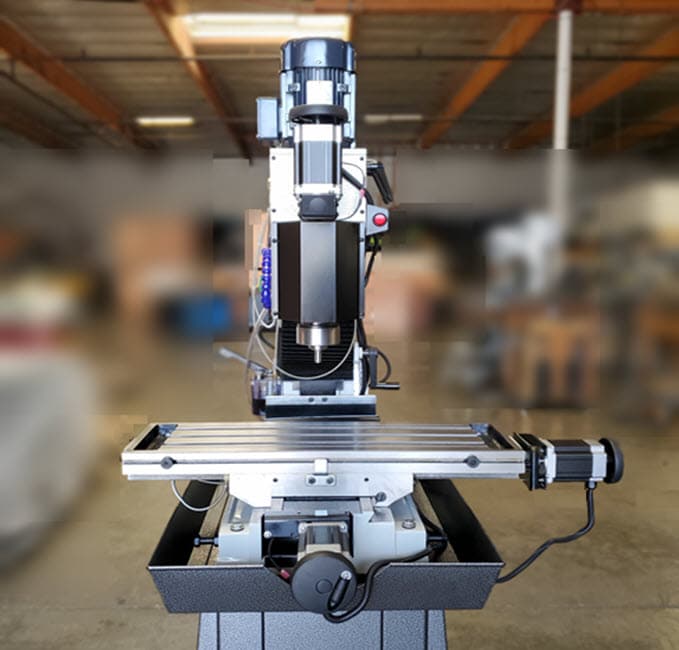Table of Contents
- Can You Print Out Different Components in CNC Mill?
- Frequently Asked Questions
- Can different components be printed out in CNC Mil?
- What materials can be used to print out components using CNC Mil?
- How accurate are the components produced using CNC Mil?
- What are the advantages of using CNC Mil to print out components?
- What are the limitations of using CNC Mil to print out components?
Are you looking to create intricate and unique designs in your CNC milling projects? Using 3D printing technology to print out different components can greatly enhance your capabilities. But, can you really print out different components in CNC milling? Let’s dive into this topic and explore the possibilities.
CNC milling is a precise machining process that uses computer-controlled machines to cut and shape materials. While it is a powerful tool for manufacturing, it does have its limitations when it comes to complex designs. This is where 3D printing comes in. By printing out different components, you can achieve greater detail and intricacy in your CNC milling projects. But, how do these two technologies work together? Let’s find out.
Yes, you can print out different components in CNC mill. CNC mill is a versatile machine that can produce complex and intricate shapes with high accuracy. With the help of computer-aided design (CAD) software, you can create 3D models of your components and then use the CNC mill to produce them. The process involves cutting and shaping the material using a rotating cutting tool, which can be controlled by a computer. CNC milling is widely used in various industries, including aerospace, automotive, and medical, to produce high-quality components efficiently.
Can You Print Out Different Components in CNC Mill?
CNC Milling has been a game-changer in the manufacturing industry, allowing for the creation of complex parts with high precision and accuracy. However, one question that arises among CNC Milling enthusiasts is whether it is possible to print out different components using a CNC Mill. In this article, we will explore this question and provide you with all the information you need to know.
Understanding CNC Milling
CNC Milling is a computer-controlled manufacturing process that uses a rotating cutter to remove material from a workpiece to create a specific shape or design. The process is highly precise and accurate, making it ideal for creating complex shapes and designs. CNC Milling machines can work with a variety of materials, including metals, plastics, and wood.
Benefits of CNC Milling
One of the primary benefits of CNC Milling is its high level of precision and accuracy. CNC Milling machines can create parts that are identical to each other, ensuring consistency in the manufacturing process. Additionally, CNC Milling machines can work with a variety of materials, making them versatile and adaptable to different manufacturing needs.
CNC Milling vs. 3D Printing
While CNC Milling and 3D printing are both manufacturing processes, they differ in their approach. CNC Milling subtracts material from a workpiece to create a shape, while 3D printing adds material layer by layer to create a shape. CNC Milling is often used for creating metal parts, while 3D printing is more commonly used for plastic parts.
Printing Out Different Components in CNC Mill
One of the advantages of CNC Milling is its ability to create different components. CNC Milling machines can be programmed to create parts with different shapes and sizes, allowing for a wide range of components to be printed out. These components can be used in various industries, including aerospace, automotive, and medical.
The Role of CAD in CNC Milling
Before printing out different components in CNC Milling, designers must first create a 3D model of the component using Computer-Aided Design (CAD) software. The CAD model is then imported into the CNC Milling machine, where it is programmed to create the component. The accuracy of the CAD model is essential to ensure that the component is printed out correctly.
Types of Components That Can be Printed Out in CNC Mill
CNC Milling machines can print out various components, including gears, brackets, and even prosthetic limbs. These components can be made from different materials, depending on the manufacturing requirements. In the aerospace industry, CNC Milling is often used to create turbine blades, while in the automotive industry, it is used to create engine components.
Conclusion
In conclusion, CNC Milling is an incredibly versatile manufacturing process that can print out a wide range of components. The ability to print out different components makes CNC Milling an ideal solution for many industries, from aerospace to medical. With its high level of precision and accuracy, CNC Milling is a reliable and efficient manufacturing process that will continue to shape the manufacturing industry for years to come.
Frequently Asked Questions
Here are some common questions regarding printing out different components in CNC Mil.
Can different components be printed out in CNC Mil?
Yes, CNC Mil can print out different components. This is because CNC Mil is a computer-controlled machine that can be programmed to produce various components. The machine uses a cutting tool to remove material from a workpiece, which can be done in different shapes and sizes. The software used in CNC Mil allows for customization of the components produced, making it possible to print out different components.
However, it is important to note that the machine’s ability to print out different components will depend on its design and capabilities. Some CNC Mil machines may not be able to print out complex or intricate components. It is important to ensure that the machine used can produce the desired components before attempting to print them out.
What materials can be used to print out components using CNC Mil?
CNC Mil machines can print out components using a variety of materials. Some of the commonly used materials include metals such as aluminum, brass, and steel, as well as plastics such as acrylic and PVC. The choice of material will depend on the specific application of the component being produced.
It is important to note that different materials may require different cutting tools and settings to produce the desired component. The software used in CNC Mil should be able to provide guidance on the appropriate settings and tools for each material. Additionally, some materials may be more difficult to work with than others, so it is important to have experience and expertise in handling different materials.
How accurate are the components produced using CNC Mil?
The accuracy of the components produced using CNC Mil can vary depending on several factors. These include the quality of the machine used, the skill of the operator, and the complexity of the component being produced.
Generally, CNC Mil machines are capable of producing components with high accuracy and precision. This is because the machines are computer-controlled and can perform repetitive tasks with minimal human intervention. Additionally, the software used in CNC Mil allows for precise customization of the components produced. However, it is important to note that achieving high accuracy requires proper calibration of the machine and careful attention to detail during the production process.
What are the advantages of using CNC Mil to print out components?
There are several advantages to using CNC Mil to print out components. One of the main advantages is the ability to produce components with high accuracy and precision. CNC Mil machines are computer-controlled and can perform repetitive tasks with minimal human intervention, resulting in consistent component production.
Additionally, the software used in CNC Mil allows for customization of the components produced, making it possible to produce components in different shapes and sizes. CNC Mil can also work with a variety of materials, making it suitable for a wide range of applications. Finally, CNC Mil can produce components quickly and efficiently, reducing production time and costs.
What are the limitations of using CNC Mil to print out components?
While CNC Mil has many advantages, there are also some limitations to using this technology. One of the main limitations is the high cost of the machines and associated software. CNC Mil machines are expensive to purchase and maintain, making them less accessible for small businesses or hobbyists.
Additionally, CNC Mil machines require skilled operators who have experience in programming and operating the machines. Improper use of the machines can lead to inaccurate or unsafe production, making it important to have knowledgeable operators. Finally, CNC Mil machines may not be suitable for producing complex or intricate components, depending on the machine’s design and capabilities.
In conclusion, CNC milling is a highly versatile and efficient manufacturing process that allows for the creation of complex shapes and intricate designs. However, when it comes to printing out different components, it is important to understand the limitations and capabilities of the technology.
Firstly, it is possible to print out different components in CNC milling, but it depends on the complexity of the design and the type of material being used. Some materials may not be suitable for printing, while others may require additional processing or finishing to achieve the desired results.
Secondly, CNC milling offers a range of benefits over traditional manufacturing methods, including higher precision, faster production times, and greater control over the final product. With the right tools and expertise, it is possible to create complex parts and components with minimal waste and maximum efficiency.
Finally, as with any manufacturing process, it is important to work with experienced professionals who can help you navigate the intricacies of CNC milling and ensure that your project is completed to the highest standards. By doing so, you can achieve the results you need to bring your designs to life and take your business to the next level.
Request a quote today!
[contact-form-7 id="1578" title="Contact form"]
Please compress the file into a ZIP or RAR file before uploading. Alternatively, send through your RFQ by email.
enquires@unitymanufacture.com





